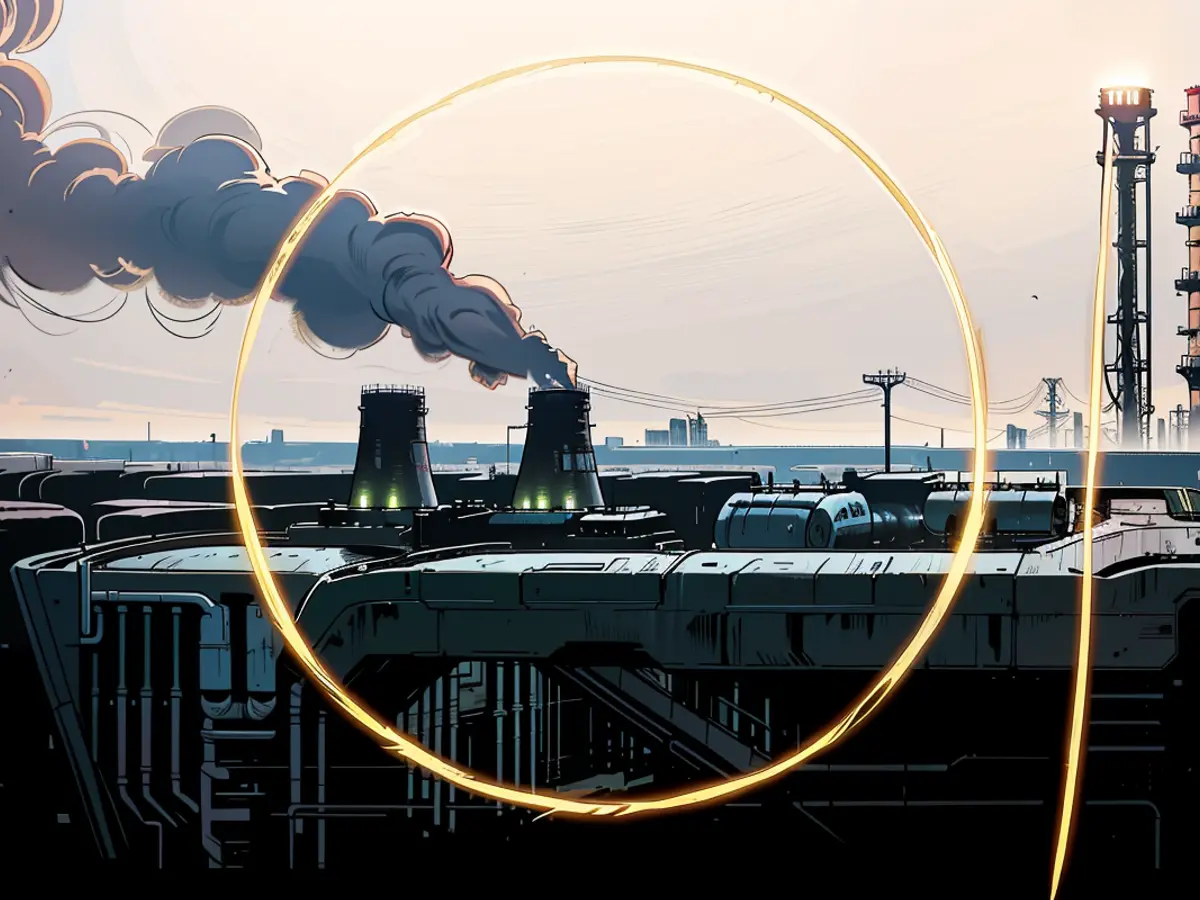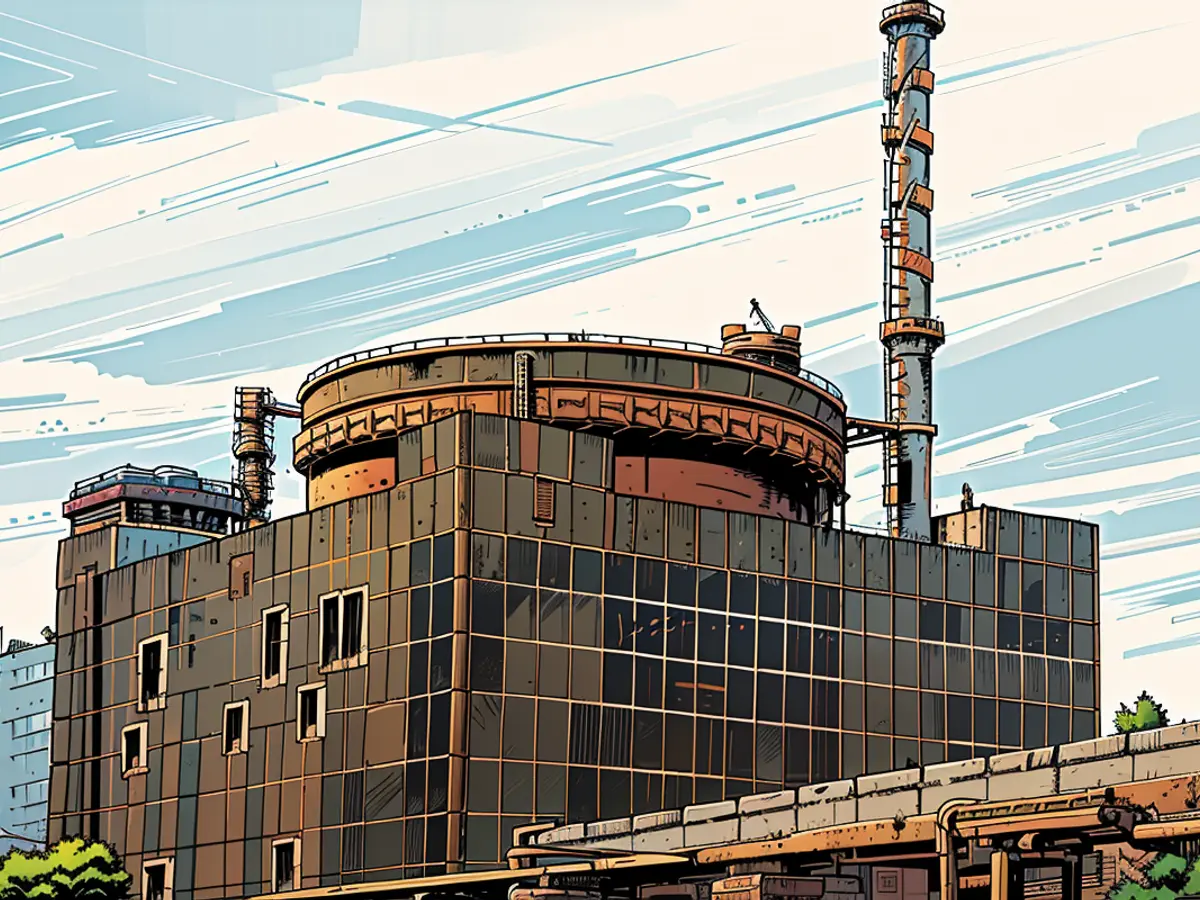- Worry over the Ukrainian nuclear facility situated in Sapporo
The International Atomic Energy Agency (IAEA) is concerned about the safety of the Ukrainian nuclear power plant in Zaporizhzhia following a recent attack. An explosion ended up occurring near the plant's safety zone, which IAEA experts on the ground believe was caused by a drone carrying an explosive payload.
IAEA Director General Rafael Grossi stated, "Once again, we see an escalation of threats to nuclear safety at the Zaporizhzhia NPP." Grossi continued to express his concern and urged all parties to exercise restraint.
According to IAEA observers, heavy contestation has been taking place in the area surrounding the plant lately. Although calls for restraint have been made, there's no indication that the fighting is slowing down. The plant has reported damage near it multiple times in recent days.
Grossi explained, "Nuclear power plants are resilient to technical or human failure and even extreme external influences, but they are not designed to withstand direct military attacks." A fire had occurred at the Zaporizhzhia NPP's cooling tower recently.
Russia claims that the occupied Zaporizhzhia NPP has been a target of attacks and sabotage several times. Both Moscow and Kyiv have blamed each other for this.
Russia's state nuclear agency Rosatom reported a deterioration of the situation around the Kursk nuclear power plant. Rosatom CEO Alexei Likhachev suggested that Grossi visit the Kursk region and inspect the plant and the nearby city of Kursk. Russian reports indicate daily air raid alerts due to the threat of Ukrainian attacks. Remnants of a rocket were also discovered on the plant site recently.
Rosatom and the Russian Ministry of Defense claimed there's evidence that Ukraine is planning a provocation against the Kursk NPP. The Ministry threatened a severe response if such a provocation were to occur.
Rosatom emphasized that the deteriorating situation in the two power plants poses a risk to nuclear safety principles established by the IAEA. Damage to the reputation of nuclear energy worldwide could result, one of many accusations directed at Moscow after the occupation of the Zaporizhzhia NPP.
The IAEA warned about potential dangers to the Kursk nuclear power plant due to the Ukrainian advance in early August. It remains unclear if the Ukrainian advance targets the Kursk NPP. Russia reinforced the protection of the facility, which is about 60 kilometers from the Ukrainian border, and temporarily withdrew some of the plant's workers who were building two new reactors.
Ukrainian President Volodymyr Zelenskyy reported further progress in the Kursk region after speaking with the commander-in-chief of the armed forces, Oleksandr Syrskyi. "The operation is progressing as expected. The courage of the Ukrainians is achieving great things. Now we are strengthening our positions," said Zelenskyy.
The Ukrainian Air Force reported the destruction of a significant bridge over the Sejm River in the Glushkovsky district. The bridge's ruins have eliminated an essential supply route for Russian troops, according to the Ukrainian Air Force Commander, Mykola Oleschuk.
According to Russian military bloggers on the Telegram channel "Rybar," the bridge was initially targeted with a US-type multiple rocket launcher, the Himars, and then destroyed with a glide bomb. The Russian Ministry of Foreign Affairs criticized the use of NATO weapons on Russian territory.
Zelensky also mentioned that Ukraine is capturing more Russian prisoners of war in the Kursk region to strengthen its bargaining power for future exchanges with Russia. The goal is to bring soldiers and civilians back home from Russian captivity.
As of the latest reports from Kyiv, Ukraine controls over 80 settlements and 1,500 square kilometers of territory in the Kursk region. However, these figures are not independently verifiable. Experts estimate that they are only about half of what Kyiv claims. There are reportedly around 10,000 Ukrainian soldiers deployed in the Kursk region.
Zelensky again urged the West to provide weapons with greater range. Zelensky believes this issue is strategically the most important aspect of the war. He criticized Western allies for lacking critical decisions and pointed to Britain's slow progress as an example.
Zelensky also updated on the situation in eastern Ukrainian region of Donetsk. The Russian side continues to attack numerous times. Moscow reported new attacks in the region as well. Russian units have further improved their positions in the Donbas, according to the Russian Ministry of Defense in Moscow.
Eastern Ukrainian forces are putting their best foot forward to ward off assaults and inflict substantial harm on the adversaries, as stated by Zelensky. "The situation is being adeptly managed." Concurrently, Ukraine is actively pursuing fresh assurances from its western allies for weapon supplies.
Zelensky aims to intensify the strain on Moscow to terminate the hostilities through diplomatic talks, stimulated by the Ukrainian offensive. Regrettably, such dialogues appear even more distant from Russia's viewpoint.
Shaporich, a Ukrainian town located near the border with Russia, has been a point of contention in recent months. Amidst the ongoing conflict, there have been reports of military activities and skirmishes close to Shaporich.
Following the escalation near Shaporich, the International Atomic Energy Agency (IAEA) has urged all parties involved to exercise restraint and maintain peace in the region, considering the proximity of the Zaporizhzhia nuclear power plant to the border.









